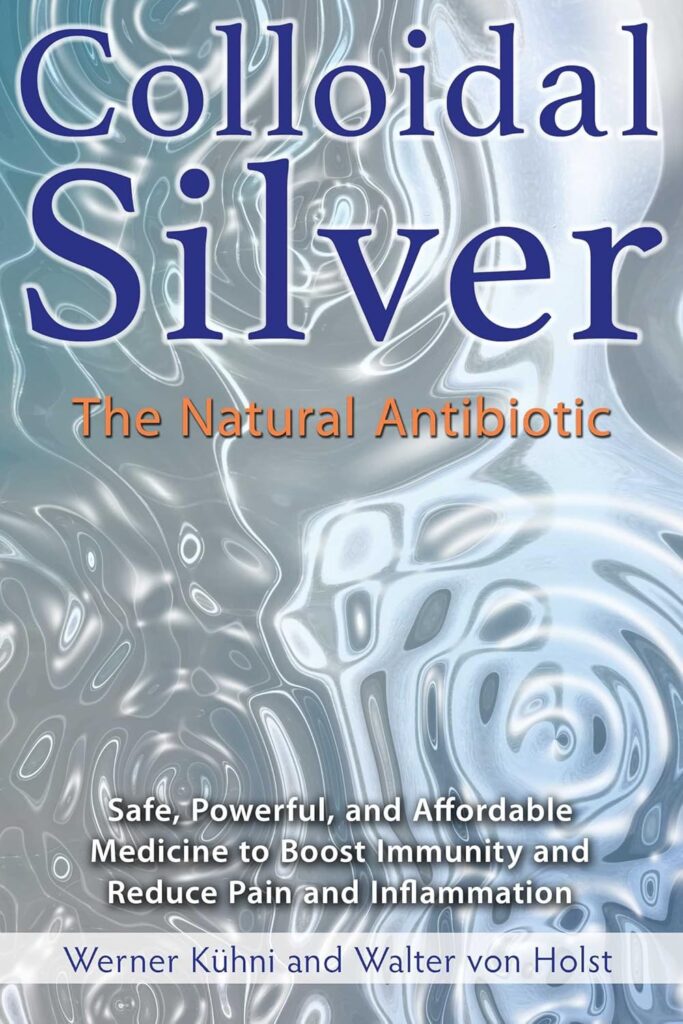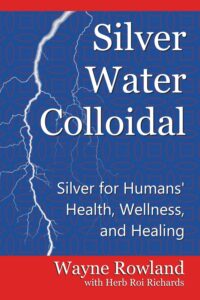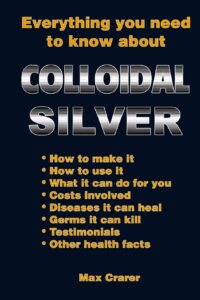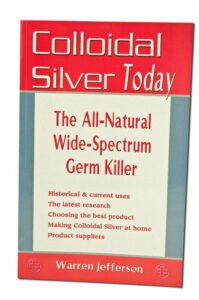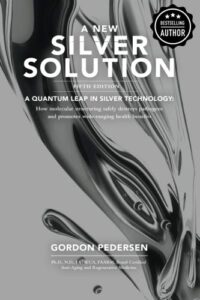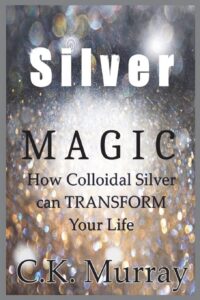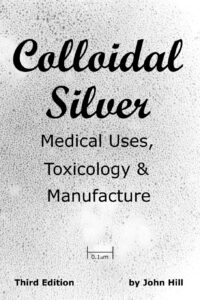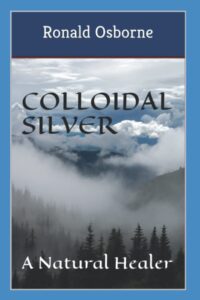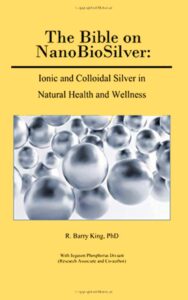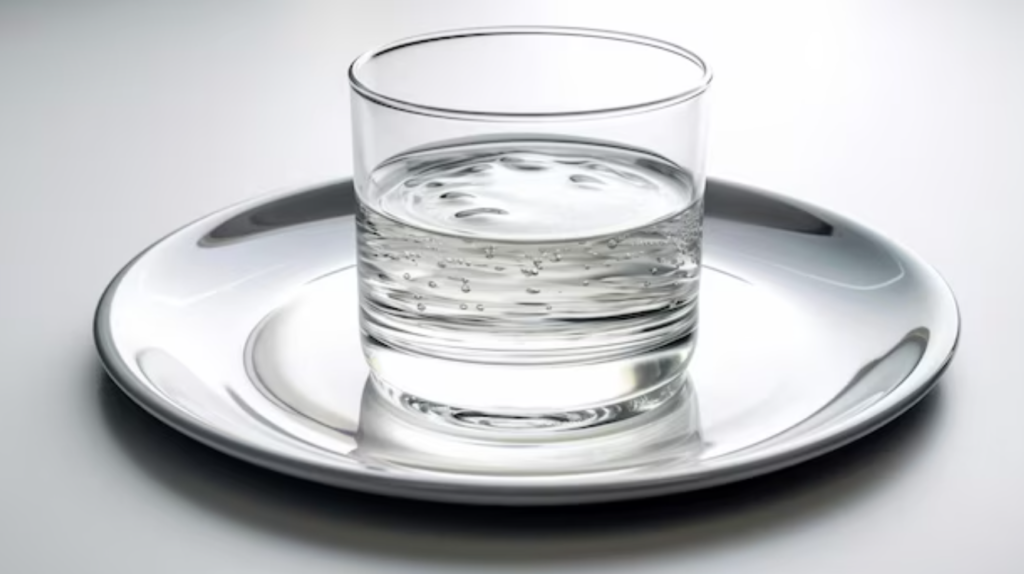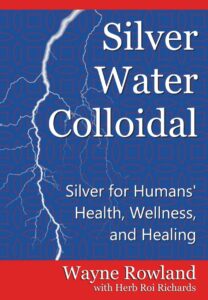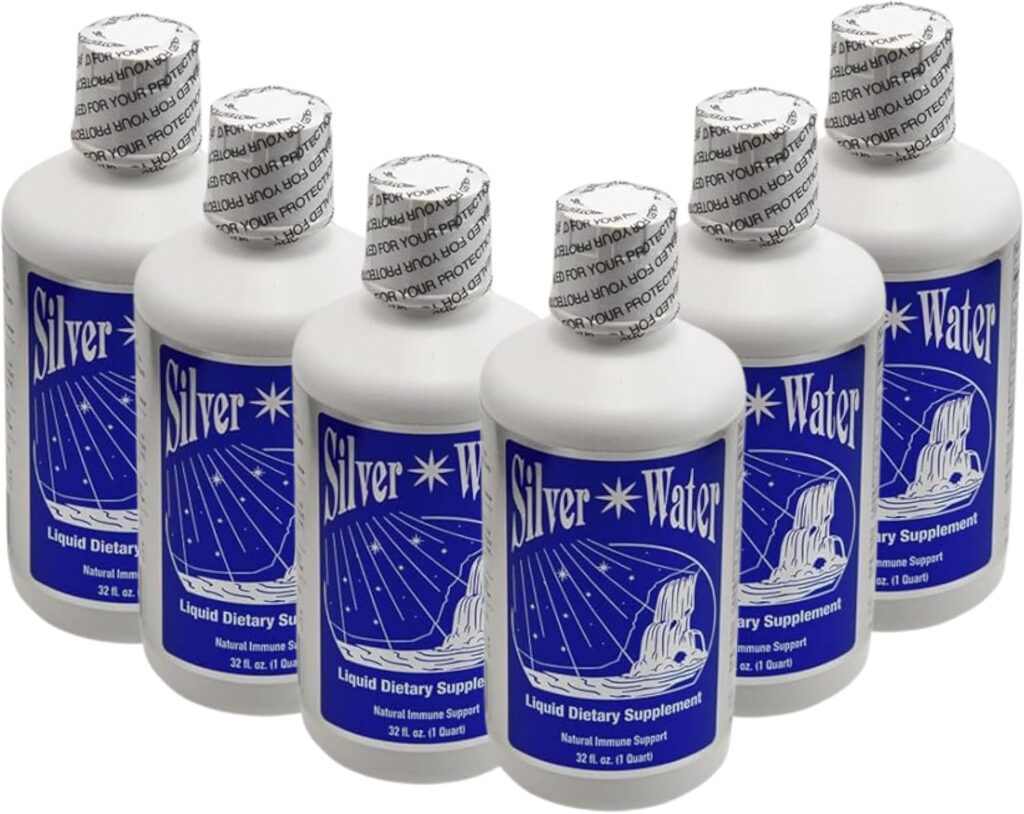Colloidal silver has long been a topic of interest in alternative medicine. Known for its purported antimicrobial properties, it has been used historically as a natural remedy for various ailments. Over the years, numerous books have been written about colloidal silver, offering various perspectives—from enthusiastic endorsements to cautious skepticism. This article delves into some of the most notable books on colloidal silver, highlighting their unique viewpoints and contributions to the ongoing conversation about this intriguing substance.
Top 10 Books on Colloidal Silver
1. Colloidal Silver The Natural Antibiotic by Werner Kühni, Walter von Holst
This book thoroughly explores the historical, scientific, and practical aspects of colloidal silver, making it a valuable resource for newcomers and seasoned users of this alternative remedy. The authors provide fascinating insights into how colloidal silver was used in ancient Greece and Rome and its resurgence in the early 20th century before the advent of modern antibiotics. They discuss the mechanisms by which silver ions disrupt microbial cell walls and interfere with their metabolic processes, destroying harmful microorganisms. Kühni and von Holst delve into the concept of bioenergetics, suggesting that colloidal silver not only works on a physical level but also has subtle energetic effects on the body. They propose that colloidal silver can help balance the body’s energy fields, promoting overall wellness and vitality.
2. Silver Water Colloidal Silver for Humans’ Health, Wellness, and Healing by Wayne Rowland, Herb Roi Richards
This book stands out for its unique approach to the subject, offering readers a holistic view of colloidal silver’s potential benefits and applications. After surviving an industrial accident that left Wayne Rowland with terminal lead poisoning and cancer, he embarked on a quest to heal himself. His discovery of colloidal silver, particularly a unique formulation he developed called “Silver Water,” uses Tesla-generated lightning and infuses water with musical Rife frequencies equivalent to the Earth’s perfect B-flat major chord. The book offers practical advice on using colloidal silver for various health issues, from immune support and diabetes to wound healing and cancer. Beyond colloidal silver, Rowland explores other transformative health practices. This includes a controversial parasite cleanse and deworming program, gut-rebuilding strategies, and methods for eliminating disease symptoms. These additional topics provide a comprehensive guide to holistic healing and rejuvenation.
3. Everything You Need To Know About Colloidal Silver by Max Crarer, David Coory
The authors thoroughly introduce colloidal silver, covering its history, scientific basis, and practical applications. Crarer and Coory clearly and concisely explain how colloidal silver works. They describe the mechanisms by which silver ions disrupt the cellular processes of bacteria, viruses, and fungi, leading to their destruction. The authors provide detailed instructions on how to use colloidal silver safely and effectively. This includes information on dosages, methods of administration, and potential side effects. One of the unique aspects of this book is its exploration of the use of colloidal silver in veterinary medicine. Crarer and Coory discuss how colloidal silver can treat infections and other health issues in pets and livestock. Whether new to colloidal silver or looking to deepen your understanding, this book provides a comprehensive and accessible overview.
4. The Wonders of Colloidal Silver Nature’s Super Antibiotic by Dhyana L. Coburn, Patrick D. Dignan
The book is designed to be accessible to beginners and experienced users, offering a wealth of information on the history, characteristics, and applications of colloidal silver. One of the strengths of this book is its practical focus. The authors provide detailed instructions on how to use colloidal silver safely and effectively. The book includes numerous testimonials and case studies from individuals who have used colloidal silver to treat various health conditions. These real-world examples add a personal touch and provide evidence of colloidal silver’s potential benefits. DIY Colloidal Silver Generator: This book stands out for its detailed instructions on how to make your own colloidal silver generator. The authors propose that colloidal silver can help balance the body’s energy fields, promoting overall wellness and vitality. This perspective is not commonly found in other books and adds a holistic dimension to the discussion.
5. Colloidal Silver Today The All Natural, Wide-Spectrum Germ Killer by Warren Jefferson
Jefferson’s clear writing style and comprehensive coverage ensure that readers gain a solid understanding of colloidal silver and its potential uses. The book begins with a brief history of colloidal silver, tracing its use from ancient times to the early 20th century. This historical perspective helps readers appreciate the long-standing interest in silver as a natural remedy. One of the unique aspects of this book is its exploration of the use of colloidal silver in agriculture. Jefferson discusses how colloidal silver can treat plant diseases and promote healthy growth. This application is not commonly covered in other books on colloidal silver, making it a valuable addition for readers interested in holistic and sustainable farming practices. Colloidal Silver Today, the All Natural Wide-Spectrum Germ Killer, empowers readers to make informed decisions about incorporating colloidal silver into their health and wellness routines.
6. A New Silver Solution: A Quantum Leap in Silver Technology by Gordon Pedersen
Dr. Gordon Pedersen’s extensive background in anti-aging and regenerative medicine and his expertise in toxicology and naturopathy lend significant credibility to his work. Pedersen delves deeply into the science behind colloidal silver, explaining how silver ions interact with pathogens at a molecular level. He describes the mechanisms by which silver disrupts bacterial cell walls, inhibits viral replication, and neutralizes fungi. This thorough scientific explanation helps readers understand why colloidal silver is effective against a wide range of microorganisms. One of the standout features of this book is Pedersen’s discussion of structured silver. Unlike traditional colloidal silver, structured silver is engineered to have a specific molecular structure that enhances its antimicrobial properties. Pedersen explains how this new form of silver is more effective and safer for human use, making it a significant advancement in silver technology. Pedersen includes a listing of protocols for using silver for different ailments, from common infections to chronic diseases.
7. Silver Magic: How Colloidal Silver Can Transform Your Life by C.K. Murray
“Silver Magic: How Colloidal Silver Can Transform Your Life” by C.K. Murray is a compelling and accessible guide exploring colloidal silver’s potential benefits. This book stands out for its practical advice, clear explanations, and the inclusion of unique insights that are not commonly found in other literature on the topic. C.K. Murray, an advocate for natural health remedies, thoroughly introduces colloidal silver. Murray’s engaging writing style and comprehensive coverage ensure that readers gain a solid understanding of colloidal silver and its potential uses. One of the unique aspects of this book is Murray’s exploration of the use of colloidal silver in enhancing mental clarity and cognitive function. Murray discusses how colloidal silver can improve brain health by reducing inflammation and supporting neural function. Silver Magic: How Colloidal Silver Can Transform Your Life offers a blend of historical context, scientific explanation, practical advice, and unique insights that make it a valuable resource for anyone interested in this natural remedy.
8. Colloidal Silver Medical Uses, Toxicology & Manufacture by John Hill
John Hill, an expert in alternative medicine, provides an exhaustive review of the medical and toxicological aspects of colloidal silver. Hill covers many applications, from treating infections and boosting the immune system to addressing chronic conditions. Scientific studies and clinical evidence support each application. Hill addresses common concerns about silver toxicity and argyria, providing evidence-based guidelines on safe usage. Hill offers a comprehensive guide for the manufacture of colloidal silver, including the low-voltage cathodic method. One of the unique aspects of this book is Hill’s exploration of the use of colloidal silver in environmental applications. He discusses how colloidal silver can be used to purify water and treat wastewater, highlighting its potential as a sustainable solution for ecological health. The book’s blend of scientific rigor, practical advice, and unique insights makes it a valuable resource for anyone interested in this safe, natural biocide.
9. Colloidal Silver A Natural Healer by Ronald Osborne
This book is particularly notable for its straightforward approach and the inclusion of unique applications that are not commonly found in other literature on the topic. The book includes a section on the use of colloidal silver for pets and livestock. Osborne discusses how colloidal silver can treat infections and other animal health issues, providing practical advice for pet owners and farmers. One of the unique aspects of this book is Osborne’s exploration of the use of colloidal silver in gardening. He discusses how colloidal silver can treat plant diseases and promote healthy growth. This application is not commonly covered in other books on colloidal silver, making it a valuable addition for readers interested in holistic and sustainable gardening practices. Colloidal Silver: A Natural Healer is a well-rounded and informative guide offering a practical approach to colloidal silver. Its blend of historical context, scientific explanation, practical advice, and unique insights makes it a valuable resource for anyone interested in this natural remedy. Including information on the use of colloidal silver in gardening sets this book apart from other literature on the topic.
10. The Bible on NanoBioSilver Ionic and Colloidal Silver in Natural Health and Wellness by R. Barry King PhD
Dr. R. Barry King, a seasoned expert with a diverse academic background in microbiology, environmental biology, marine ecology, and archaeology, provides an exhaustive review of colloidal silver’s medical and toxicological aspects. King also offers a comprehensive guide for the manufacture of colloidal silver, including the low-voltage cathodic method. This section is handy for readers interested in producing their own colloidal silver at home, ensuring both purity and effectiveness. The Bible on NanoBioSilver: Ionic and Colloidal Silver in Natural Health and Wellness is a well-rounded and informative guide that offers a balanced perspective on colloidal silver. Whether you are new to colloidal silver or looking to deepen your understanding, this book provides a comprehensive and accessible overview. It empowers readers to make informed decisions about incorporating colloidal silver into their health and wellness routines.
Colloidal Silver Science Continues…
The literature on colloidal silver is as diverse as the perspectives it encompasses. From enthusiastic proponents to cautious skeptics, authors have explored its potential benefits and risks in great detail. Whether you’re a seasoned user or new to the concept, these books offer valuable insights and practical advice on incorporating colloidal silver into your health regimen. As with any alternative treatment, it’s essential to approach colloidal silver with an informed and balanced perspective, considering both the scientific evidence and anecdotal experiences.
